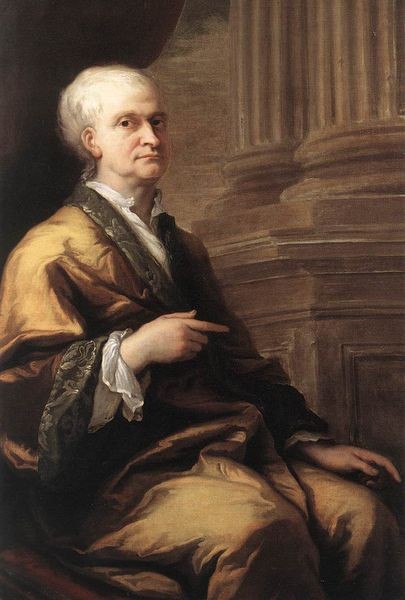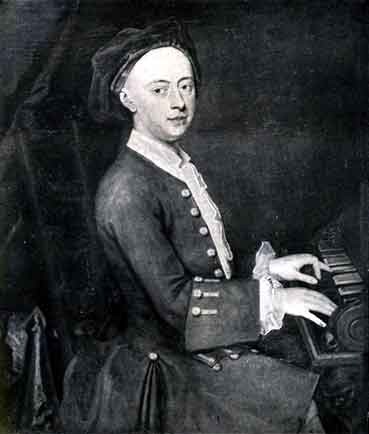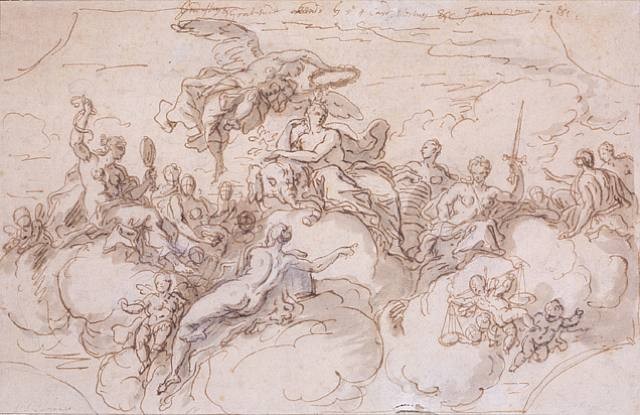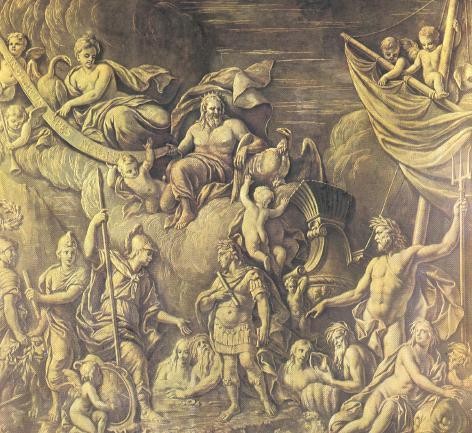Sir James Thornhill (1675-1734)
Get a Sir James Thornhill (1675-1734) Certificate of Authenticity for your painting (COA) for your Sir James Thornhill (1675-1734) drawing.
For all your Sir James Thornhill (1675-1734) artworks you need a Certificate of Authenticity (COA) in order to sell, to insure or to donate for a tax deduction.
Getting a Sir James Thornhill (1675-1734) Certificate of Authenticity (COA) is easy. Just send us photos and dimensions and tell us what you know about the origin or history of your Sir James Thornhill (1675-1734) painting or drawing.
If you want to sell your Sir James Thornhill (1675-1734) painting or drawing use our selling services. We offer Sir James Thornhill (1675-1734) selling help, selling advice, private treaty sales and full brokerage.
We have been authenticating Sir James Thornhill (1675-1734) and issuing certificates of authenticity since 2002. We are recognized Sir James Thornhill (1675-1734) experts and Sir James Thornhill (1675-1734) certified appraisers. We issue COAs and appraisals for all Sir James Thornhill (1675-1734) artworks.
Our Sir James Thornhill (1675-1734) paintings and drawings authentications are accepted and respected worldwide.
Each COA is backed by in-depth research and analysis authentication reports.
The Sir James Thornhill (1675-1734) certificates of authenticity we issue are based on solid, reliable and fully referenced art investigations, authentication research, analytical work and forensic studies.
We are available to examine your Sir James Thornhill (1675-1734) painting or drawing anywhere in the world.
You will generally receive your certificates of authenticity and authentication report within two weeks. Some complicated cases with difficult to research Sir James Thornhill (1675-1734) paintings or drawings take longer.
Our clients include Sir James Thornhill (1675-1734) collectors, investors, tax authorities, insurance adjusters, appraisers, valuers, auctioneers, Federal agencies and many law firms.
We perform Sir James Thornhill art authentication, appraisal, certificates of authenticity (COA), analysis, research, scientific tests, full art authentications. We will help you sell your Sir James Thornhill or we will sell it for you.

Sir James Thornhill was an English painter of historical subjects, in the Italian baroque tradition. He was the son of Walter Thornhill of Wareham and Mary, eldest daughter of Colonel William Sydenham, governor of Weymouth. In 1689, he was apprenticed to Thomas Highmore (1660-1720), a specialist in non-figurative decorative painting. Young James also learned much from Antonio Verrio (1639?-1707) and Louis Laguerre (1663-1721), prominent foreign decorative painters then working in England. In 1696 he completed his apprenticeship and in March 1704 became a Freeman of the Painter-Stainers’ Company of London. From 1707 on, Thornhill successfully worked for the upper class as a history painter. In June 1718 George I made him court painter, and in March 1720 Serjeant Painter. In the same year, he was master of the Painters’ Company and in 1723 fellow of the Royal Society. From 1722 to 1734 he was also member of Parliament. On 2 May 1720, the king knighted him.
Thornhill decorated palace interiors with large-scale compositions. The figures of these wall paintings are commonly shown in idealized and rhetorical postures. Examples are the allegorical wall and ceiling decorations of the Painted Hall at Greenwich Hospital (1707-27) depicting the Protestant succession of English monarchs from William and Mary to George I; the eight scenes executed in grisaille from the Life of St. Paul in the cupola of St Paul’s Cathedral (1716-19); and the ceiling of the Great Hall in Blenheim Palace, painted in 1716 and showing the Duke of Marlborough’s victory at the Battle of Blenheim during the War of the Spanish Succession. In Dorset, his birthplace, Thornhill decorated the reredos at St. Mary’s Church, Weymouth, with a picture of the Last Supper. He also painted some portraits.

In 1718 Sir James took a large house on Covent Garden Piazza, and in 1725 he built Thornhill House in the south of Stalbridge, near Sturminster Newton, Dorset. He probably designed this house himself in the Palladian manner.

In 1711, Thornhill was one of the 12 original directors of Sir Godfrey Kneller’s academy at Great Queen Street, London. In 1716, he succeeded Kneller as Governor there and held the post until 1720. He then established his own private drawing school at Covent Garden, but this was soon closed. In October 1720, Louis Cheron and John Vanderbank opened another academy in an old Presbyterian meeting house in St. Martin’s Lane, which survived a few years. One of the subscribers was William Hogarth. In November 1724, Thornhill made a second attempt to establish a new free academy in his private house at Covent Garden. This was more successful, and Hogarth must have been a member from the beginning. On 23rd March 1729, Hogarth married Sir James’ daughter Jane.

At the end of his life Thornhill received no further major commissions. So he began to copy the Raphael Cartoons at Hampton Court. Apart from full-size copies, completed in 1731, he made 162 smaller studies of heads, hands and feet intending to publish them in printed form for the use of art students, but his death left this work unfinished. The original small wash designs of details of the Raphael Cartoons are now kept in the Victoria and Albert Museum, London.
